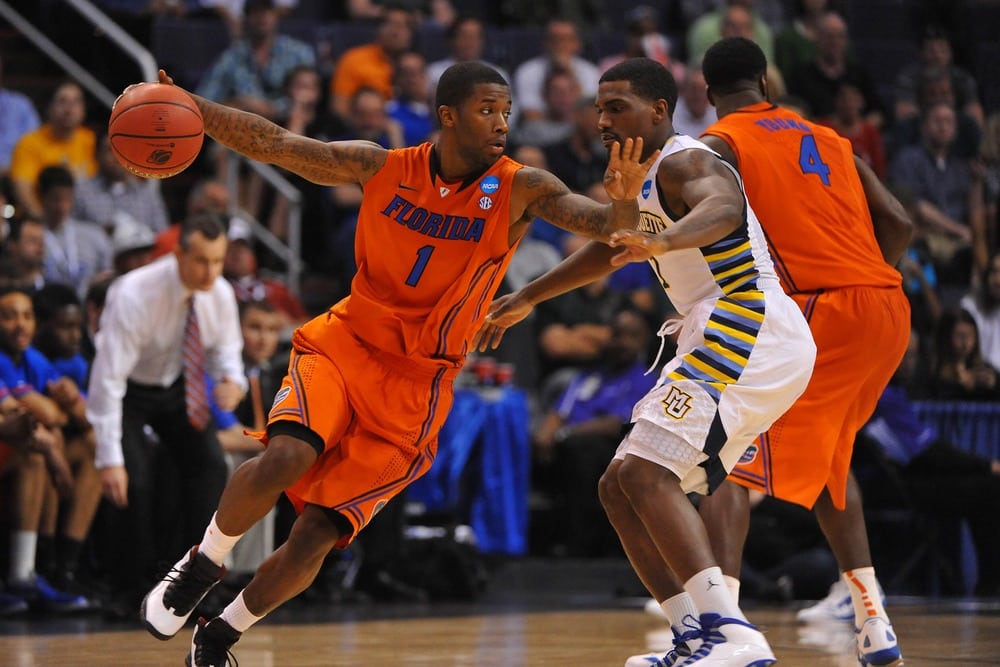
How to Coach Effective Defensive Switching: Getting Your Team on the Same Page
Defensive switching is a crucial strategy in basketball that can disrupt an opponent’s offensive flow, create mismatches, and provide flexibility in defending various types of plays. To coach effective defensive switching, it’s essential to focus on communication, technique, and strategic understanding.
This article will guide you through the key components of coaching defensive switching and provide practical tips to help your team excel in this area.

1. Understand the Basics of Defensive Switching
Before coaching defensive switching, ensure that you and your players understand the fundamental concepts.
What is Defensive Switching?
Defensive switching involves changing defensive assignments during a play to better match up against the offensive players. It’s often used to counter screens, prevent mismatches, and maintain defensive pressure.
- Scenario Awareness: Emphasize that players must be alert to recognize situations when switching is necessary. This includes being aware of offensive movements and screening actions.
When to Switch
Common scenarios for switching include:
- Screens: When an offensive player sets a screen, defenders must communicate and determine whether to switch based on the defensive strategy.
- Mismatch Situations: If a smaller guard is defending a larger forward, switching can help create a more favorable matchup.
- High Ball Screens: In these situations, switching can prevent the offensive player from getting an open shot or driving lane.
2. Teach Effective Communication
Clear and consistent communication is vital for successful defensive switching.
Call Out Screens
Instruct players to call out screens as they occur so teammates are aware of the need to switch. This helps ensure that all players are on the same page and can execute switches effectively.
- Cues: Use specific phrases like “Switch!” or “Screen right!” to quickly alert teammates.
- Practice Communication: Include communication drills in practice to make calling out screens second nature.
Verbal and Non-Verbal Cues
Develop specific verbal cues for different types of switches and non-verbal signals that can be used during fast-paced situations.
- Non-Verbal Signals: Consider hand signals or gestures that can indicate a switch without shouting, especially in noisy gym environments.
3. Practice Switching Techniques
Proper technique is crucial for effective switching.
Switching on Screens
Teach players to switch seamlessly when a screen is set. Players should be prepared to switch assignments quickly and maintain defensive pressure on the new offensive player.
- Technique Training: Focus on footwork and positioning to ensure defenders are balanced and ready to switch effectively.
- Drill Implementation: Regularly incorporate switching into drills to build muscle memory and reinforce proper technique.
Switching Without Losing Position
Ensure that players maintain their defensive stance and positioning during switches. This helps prevent offensive players from gaining an advantage and maintains defensive integrity.
- Footwork Drills: Work on defensive slides and footwork to ensure players can maintain position while switching.

4. Develop Switching Drills
Incorporate drills into your practice sessions to reinforce switching skills.
Basic Switching Drill
Set up a drill where players practice switching on screens. Use live defense to simulate game conditions and ensure players can execute switches effectively.
- Live Action: Include live scrimmages where players must call out and execute switches in real-time to develop confidence.
Full-Court Switching Drill
Create a full-court drill where players must switch defensively while transitioning from offense to defense. This helps build endurance and adaptability.
- Transition Focus: Emphasize quick transitions and the ability to switch defensive assignments on the move.
5. Implement Switching Strategies
Develop strategies to maximize the effectiveness of defensive switching.
Switching Based on Matchups
Analyze opposing players’ strengths and weaknesses to determine when and how to switch. For example, switch to put a quicker defender on a speedy guard or a stronger player on a post player.
- Matchup Breakdown: Use scouting reports to prepare players for specific opponents and their tendencies.
Switching to Protect the Rim
Use switching to ensure that rim protectors are positioned correctly to defend against inside plays. This can be particularly effective in preventing easy scoring opportunities near the basket.
- Defensive Focus: Train players to identify when to switch and protect the paint, especially against teams that rely on inside scoring.

6. Address Common Switching Mistakes
Identify and address common mistakes that players may make during switching.
Miscommunication
Ensure that players understand the importance of clear communication during switches. Miscommunication can lead to defensive breakdowns and easy scoring opportunities for the offense.
- Drill for Clarity: Implement drills that specifically focus on communication during switches.
Over-committing
Teach players to avoid over-committing to switches, which can create open shots or driving lanes for the offensive team. Players should be disciplined in their switching and maintain defensive balance.
- Discipline Training: Focus on the importance of positioning and decision-making when switching to avoid unnecessary risks.
7. Analyze Game Film
Use game film to evaluate and improve your team’s switching defense.
Review Switches
Analyze game footage to review how effectively your team executed switches. Look for instances where switches were successful or where improvements are needed.
- Key Moments: Focus on critical moments in the game where switching made a significant impact, both positively and negatively.
Learn from Opponents
Study opponents’ switching strategies to gain insights into effective techniques and potential weaknesses in their defense.
- Opponent Analysis: Identify successful switches executed by opponents and discuss how your team can implement similar techniques.

8. Adjust Based on Opponent’s Strategy
Be prepared to adjust your switching strategy based on the opponent’s offensive approach.
Adjusting to Screen Types
Adapt your switching strategy depending on the type of screens the opponent uses (e.g., ball screens, off-ball screens). Tailor your approach to effectively counter their offensive tactics.
- Flexibility in Strategy: Ensure players understand the need for flexibility and the ability to adapt as the game progresses.
Countering Offensive Adjustments
Be ready to make adjustments if the opponent changes their offensive strategy in response to your switching defense. This flexibility helps maintain defensive effectiveness throughout the game.
- In-Game Communication: Encourage ongoing communication during the game to make necessary adjustments based on real-time observations.
9. Focus on Team Chemistry
Effective defensive switching requires strong team chemistry and trust.
Building Trust
Encourage players to trust each other’s defensive abilities and rely on teammates during switches. Building trust helps ensure smooth execution and reduces the likelihood of defensive breakdowns.
- Team-Building Activities: Incorporate activities that strengthen team bonds and improve communication on the court.
Team-Building Activities
Incorporate team-building activities to strengthen relationships and improve communication on the court. Strong team chemistry enhances overall defensive performance.
- Group Outings: Organize group activities outside of basketball to foster camaraderie and understanding among players.
10. Reinforce Switching Concepts Regularly
Consistent reinforcement of switching concepts helps maintain effectiveness.
Regular Practice
Incorporate switching drills and scenarios into regular practice sessions to keep players sharp. Regular repetition helps reinforce skills and maintain defensive discipline.
- Revisiting Concepts: Frequently revisit switching concepts in practice to keep them fresh in players’ minds.
Ongoing Education
Continuously educate players on the importance and techniques of defensive switching. Provide feedback and coaching to help them improve and adapt.
- Skill Assessments: Conduct assessments to evaluate each player’s understanding and execution of switching techniques.
How to Coach Effective Defensive Switching Conclusion:
Coaching effective defensive switching involves a combination of communication, technique, strategy, and practice. By understanding the basics of defensive switching, teaching communication skills, practicing techniques, and implementing strategies, you can enhance your team’s ability to execute successful switches.
Addressing common mistakes, analyzing game film, adjusting to opponents, focusing on team chemistry, and reinforcing concepts regularly will further improve your team’s defensive performance.
With these strategies, you’ll be better equipped to defend against various offensive tactics and maintain a strong, adaptable defense throughout the season.



